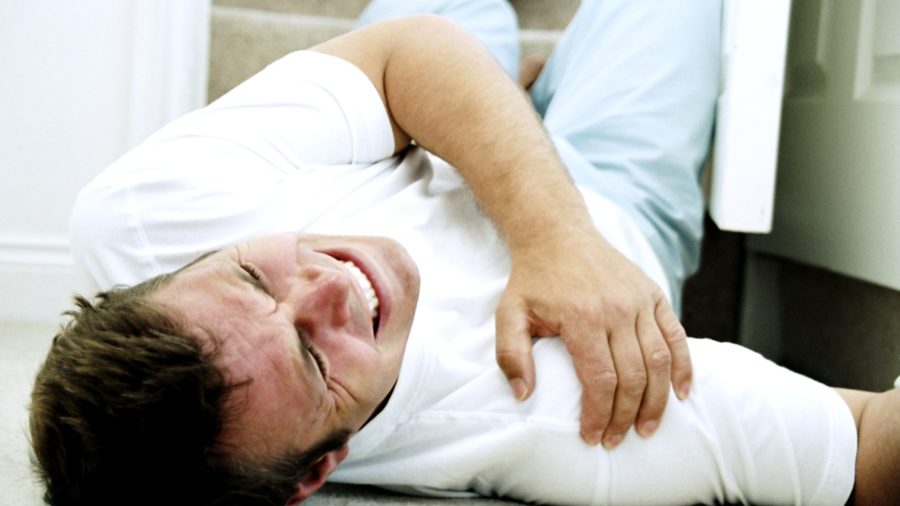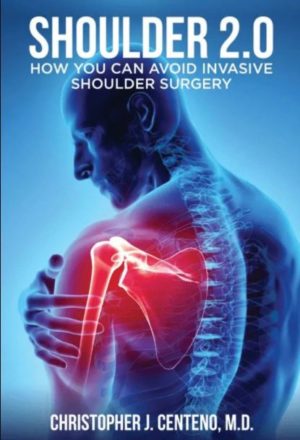Chronic shoulder instability can be disabling to athletes and weekend warriors alike. What is chronic shoulder instability? What causes shoulder joint instability? Does shoulder instability go away? Are there non-surgical treatment options for chronic shoulder instability? Let’s dig in.
What is Chronic Shoulder Instability?
Shoulder instability is a problem that occurs when the structures that surround the shoulder joint do not work to maintain the ball within the socket. If the joint is loose the ball may slide out the socket which is called a subluxation. The stability of the shoulder joint is dependent upon the ligaments, muscles, and tendons. Ligaments are thick fibrous tissues that connect bones together. Tendons are thick fibrous tissues that connect muscles to bones.
Basic Shoulder Anatomy
The shoulder is a ball-socket joint. The ball is the head of the humerus and the socket is the glenoid. The socket is quite shallow which allows the shoulder to have an amazing range of motion. Because the socket is shallow it must be stabilized by muscles, tendons, and ligaments. The adjacent shoulder illustration underscores the importance of these structures. The viewpoint is that of looking down into the shoulder socket where the ball would fit into the socket. The ball is not present in this illustration. The ball is surrounded and supported by the labrum, capsule, shoulder ligaments, and rotator cuff tendons. Collectively these structures all work together to create shoulder stability.
Shoulder dislocation has an estimated prevalence of 2% to 8% (1). Once a shoulder has dislocated it is vulnerable to repeat episodes (2) Chronic shoulder instability is the persistent inability of the ligaments, tendons, and muscles to maintain the ball within the socket.
What Causes Shoulder Joint Instability?
There are three major causes of shoulder joint instability.
- Trauma: most common in young, athletic patients. After initial traumatic dislocation, the incidence of the recurrent instability ranges from 14% to 100% (3)
- Repetitive strains: Repetitive overhead activities such as swimming, tennis, and volleyball can stretch ligaments.
- Multidirectional Instability: Patients typically have no history of trauma or repetitive strain but have loose ligaments and may have a connective tissue disorder such as Ehlers Danlos Syndrome (EDS) (4).
Does Shoulder Instability Go Away?
Depending upon the severity of the ligament and tendon injury shoulder instability may improve. Physical therapy is the initial treatment of choice in patients with chronic instability. Treatment goals include strengthening and balancing the supporting muscles (5). In a recent analysis of 22 randomized control studies, 47 % of patients who sustained a traumatic shoulder dislocation and underwent physical therapy did not have recurrent dislocations (6). Physical therapy is more effective in cases of atraumatic injuries (7). If chronic shoulder instability persists the shoulder is at risk for additional injury.
Shoulder Instability Surgery
When conservative treatment fails surgery is often recommended. Surgical treatment options include open surgery, arthroscopy, and thermal capsular shrinkage. The goal of surgery is to tighten the shoulder structure and prevent future instability and dislocations. There is significant rehabilitation required typically between 3-6 months with a limited range of motion. Recurrent dislocation after surgery can occur and varies on surgical technique and is influenced by patient age and the severity of bone loss in the ball and socket. (8). In a recent study of adolescent athletes that underwent surgical repair, 17% sustained recurrent dislocations which required additional surgery (9).
Can Shoulder Instability Be fixed Without Surgery?
Yes! Precise ultrasound-guided injections of PRP can effectively treat loose or partially torn ligaments and tendons (10). At the Centeno-Schultz Clinic, we have extensive experience in the treatment of chronic shoulder instability. This is not a procedure your family doctor or orthopedic surgeon can perform. It requires a keen understanding of shoulder anatomy, mastery of the ultrasound, and the ability to precisely advance a needle into the area of injury or laxity. To better understand the complexity of the procedure please click on the video below.
Chronic shoulder instability is the persistent inability of the ligaments, tendons, and muscles to maintain the ball within the socket. Trauma, repetitive strains, hyper-mobility, and loose ligaments can cause shoulder instability. Physical therapy is the first treatment of choice. Surgery is associated with extensive rehabilitation, limited range of motion and failure with recurrent dislocations. Precise injections of PRP are an effective nonsurgical treatment option for chronic shoulder instability.
_________________________________________________________________________
1, Brophy RH, Marx RG. The treatment of traumatic anterior instability of the shoulder: nonoperative and surgical treatment. Arthroscopy. 2009;25(3):298-304. DOI: 10.1016/j.arthro.2008.12.007
2. Simonet, W. T., & Cofield, R. H. (1984). Prognosis in anterior shoulder dislocation. The American Journal of Sports Medicine, 12(1), 19–24. https://doi.org/10.1177/036354658401200103
3. Sengodan VC, Kurian S, Ramasamy R. Treatment of Partial Rotator Cuff Tear with Ultrasound-guided Platelet-rich Plasma. J Clin Imaging Sci. 2017;7:32.
4. Guerrero P, Busconi B, Deangelis N, Powers G. Congenital instability of the shoulder joint: assessment and treatment options. J Orthop Sports Phys Ther. 2009;39(2):124-34. DOI: 10.2519/jospt.2009.2860
5. Ruiz Ibán MA, Díaz Heredia J, García Navlet M, Serrano F, Santos Oliete M. Multidirectional Shoulder Instability: Treatment. Open Orthop J. 2017;11:812-25.DOI: 10.2174/1874325001711010812
6. Lauri Kavaja, Tuomas Lähdeoja, Antti Malmivaara, Mika Paavola. Treatment after traumatic shoulder dislocation: a systematic review with a network meta-analysis.British Journal of Sports Medicine. Vol 52.Issue 23. doi.org/10.1136/bjsports-2017-098539
7. Burkhead WZ, Rockwood CA. Treatment of instability of the shoulder with an exercise program. J Bone Joint Surg Am. 1992;74(6):890-6
8, Ahmed I, Ashton F, Robinson CM. Arthroscopic Bankart repair and capsular shift for recurrent anterior shoulder instability: functional outcomes and identification of risk factors for recurrence. J Bone Joint Surg Am. 2012;94(14):1308-15.DOI: 10.2106/JBJS.J.01983
9.Blackman AJ, Krych AJ, Kuzma SA, Chow RM, Camp C, Dahm DL. Results of revision anterior shoulder stabilization surgery in adolescent athletes. Arthroscopy. 2014;30(11):1400-5. DOI: 10.1016/j.arthro.2014.05.037
10. Sengodan VC, Kurian S, Ramasamy R. Treatment of Partial Rotator Cuff Tear with Ultrasound-guided Platelet-rich Plasma. J Clin Imaging Sci. 2017;7:32.DOI: 10.4103/jcis.JCIS_26_17

